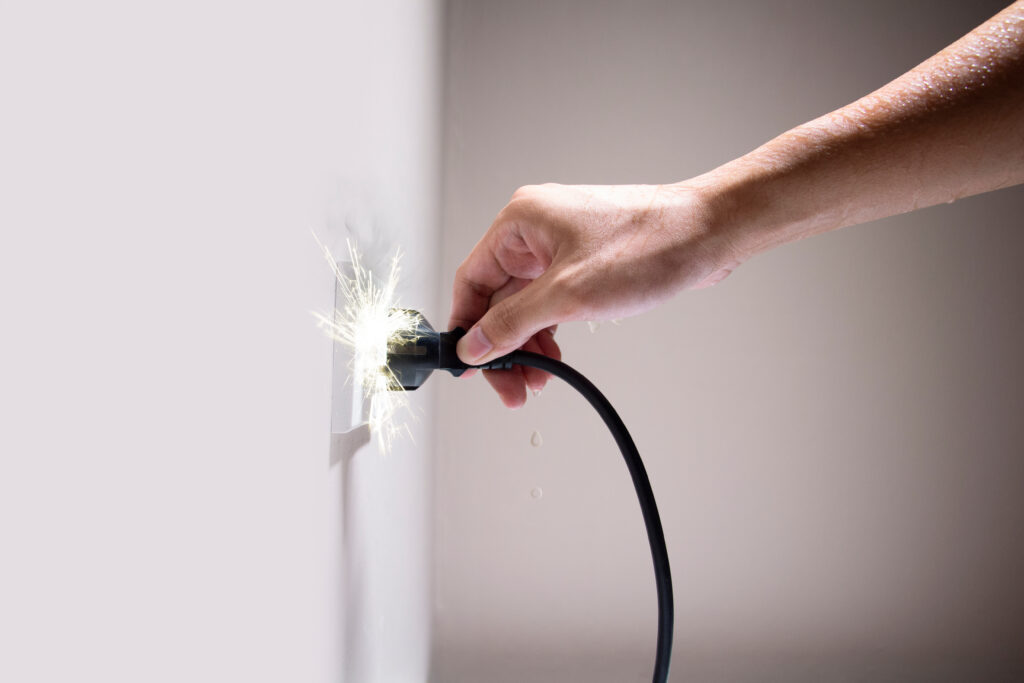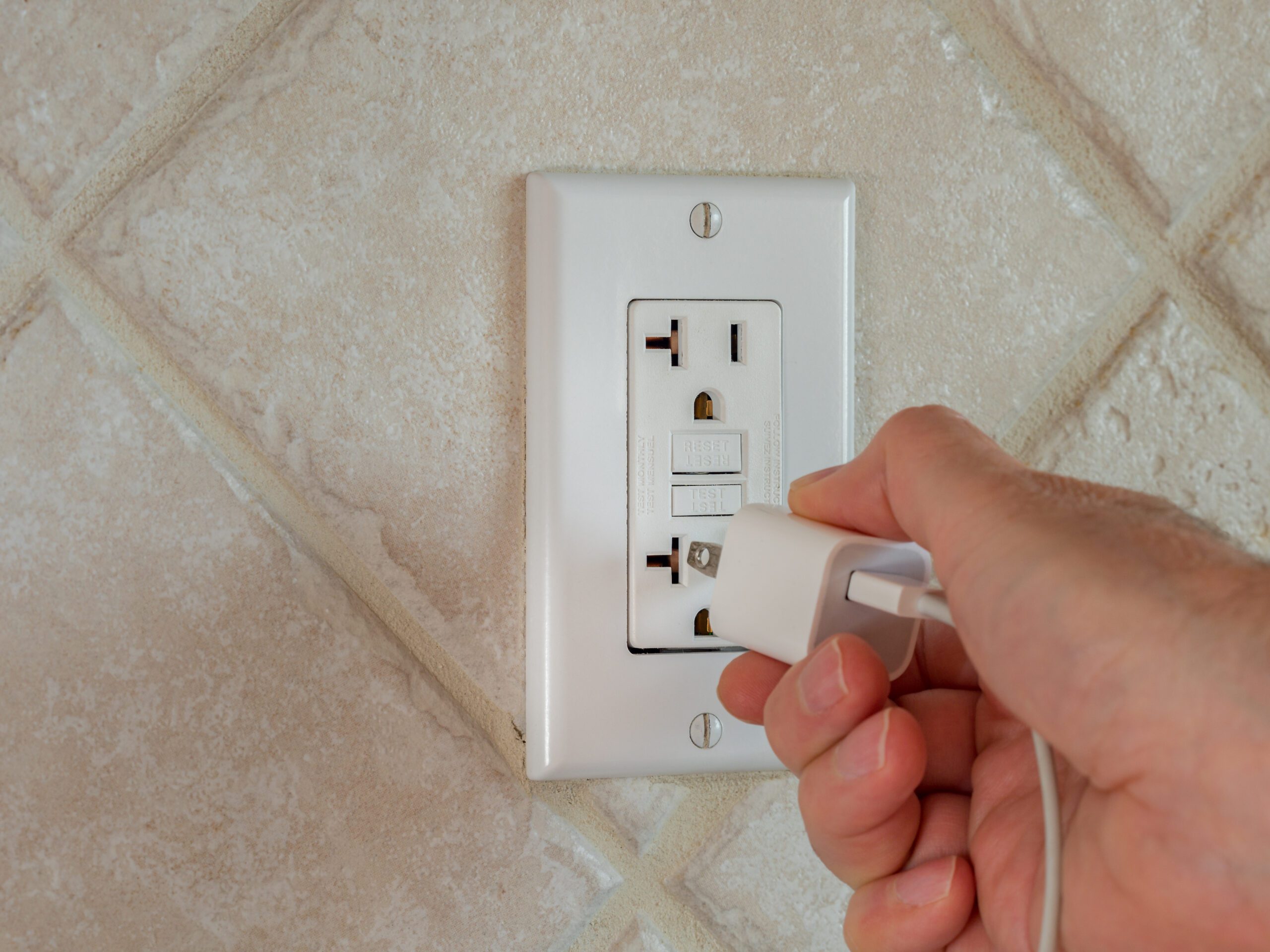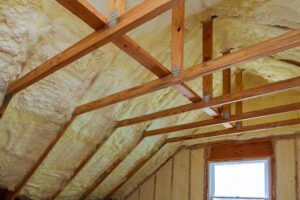I’ve been asked on many occasions where GFCI Outlets are required, and if there are none in an older home (meaning a home build prior to 1970), are required by code today. The answer is fairly straightforward and usually NO. If an older home is NOT undergoing any renovations you are typically not legally required to add them. However, this can vary based on local building codes and regulations, so be sure to check.
I will emphasize however, even if not required by law, it’s universally recommended to add GFCI outlets in areas where there’s a higher risk of electrical shock, such as near water sources (National Electric Code Section 210.8). This is a common sense safety measure that can prevent serious injuries or worse due to electrical shock.
What is a GFCI Outlet?
A Ground Fault Circuit Interrupter (GFCI) outlet is a specialized electrical receptacle designed to detect ground faults within a circuit. A ground fault occurs when an unintended pathway is created for electrical current to flow between an electrical system and a grounded surface. This can happen due to damaged wiring, faulty appliances, or insulation breakdown. Ground faults pose significant risks, including electric shock, electrical fires, and equipment damage.

For instance a ground fault can be caused when an electrical current deviates from its intended path and flows through a conductive material, such as water. This can happen when water comes into contact with exposed electrical wiring, splashed into an outlet, or directly on electrical equipment. The water serves as a conductor, allowing the current to bypass its normal circuit and potentially causing electric shock or equipment damage. A GFCI outlet will prevent injury or equipment damage by breaking the circuit, or “tripping” immediately upon detecting the ground fault.
How Does a GFCI Outlet Work?
GFCI outlets utilize advanced technology to effectively mitigate the risks associated with ground faults. Here’s a detailed explanation of their operation:
-
Current Monitoring: GFCI outlets continuously monitor the flow of electrical current within a circuit. They compare the incoming and outgoing currents to ensure they remain balanced.
-
Sensitivity: GFCI outlets are highly sensitive, capable of detecting even minor imbalances in current flow. They can identify disparities as low as 5 milliamperes (mA), a significantly smaller amount than what can cause harm to an individual.
-
Immediate Response: Upon detecting a ground fault, such as the scenario mentioned earlier with water, GFCI outlets respond quickly. They instantaneously interrupt the flow of electricity, preventing electric shocks and halting the escalation of the fault.
By rapidly interrupting the current flow, GFCI outlets protect individuals from potential harm while reducing the risk of electrical fires and equipment damage.
GFCI Outlet Requirements in Older Homes
It’s important to address GFCI outlet requirements in older homes for . Consider the following aspects:
-
Initial Installation: In older homes, GFCI outlets may not have been installed or might be limited to specific areas, such as those with water sources like kitchens, bathrooms, and outdoor outlets. However, it’s important to extend GFCI protection to other areas of the house to mitigate the risk of ground faults. One particular area to be mindful of is where you place a home aquariums. If you are installing an aquarium, you will need electric, and in many instances, the nearby outlet will not be GFCI protected.
-
Code Updates: Over time, electrical codes have evolved to prioritize safety. Although older homes may not be mandated to comply with the latest code requirements, it is advisable to update outlets during renovations or replacements. Installing GFCI outlets in locations that previously lacked them, including bedrooms, living rooms, basements, and garages, is highly recommended.
-
Consulting a Professional: When dealing with electrical work in older homes, consulting a licensed electrician is highly recommended. They can assess the existing wiring, provide expert guidance on GFCI outlet placement, and ensure compliance with current safety standards.
-
Portable GFCI Options: In cases where permanent GFCI outlet installation is impractical or costly, portable GFCI devices can be utilized. These devices are plugged into existing outlets and provide temporary GFCI protection for electrical devices connected to them.
Final Thoughts
GFCI outlets are indispensable for electrical safety. Understanding their purpose, operation, and specific requirements is vital for safety. By installing GFCI outlets in appropriate locations, homeowners can significantly reduce the risk of electric shocks, electrical fires, and equipment damage.
Having a basic understanding of your home electrical systems are invaluable for for homeowners. I recommend checking out our posts on Home Electric 101: Understanding Your Electrical Panel, as well as Homeowner Essentials, Common Sense Tips All Homeowners Should Know!




